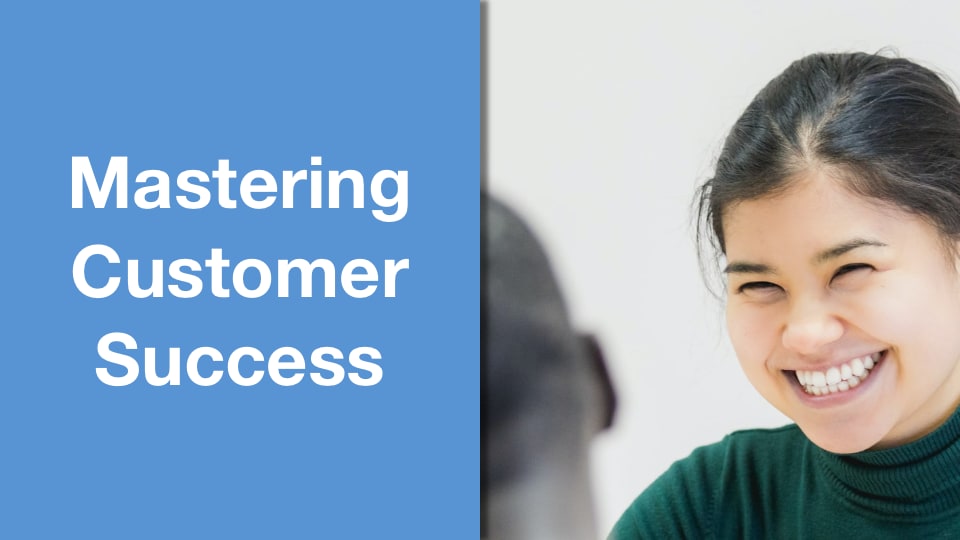Persuasion: A Route To More Effective Customer Success Management
The word persuasion makes some people nervous. It can be confused with manipulation and the idea of that makes them uncomfortable.
And while manipulation happens constantly and some people are shameless in its use it is nonetheless the case that the world runs on persuasion. You can think of persuasion and manipulation as two ways to utilise the same skillsets. The distinction made here is that persuasion occurs when you use the tools at your disposal to convince someone to follow a course of action that is transparent and has mutual benefit whereas manipulation generally conceals its true motives and often benefits the manipulator at the expense of the manipulated.
Persuasion is everywhere, you are subject to it every day whether you realise it or not and at least one of its core techniques is critical to your social and business interactions. If you are still uncertain consider this – would you prefer that you were not persuasive in your dealings with your customers? How would that affect your effectiveness as a CSM?
Equipping yourself with the tools to convince people to do things that are in their interest as well as yours is entirely consistent with being a great customer success manager: everyone should learn a little persuasion.
Below are a few key principles briefly described. In future posts I’ll discuss in more detail how they apply in the world of customer success management.
It is important to note these techniques are not magic bullets. They won’t simply switch customers from not doing something over to doing something. What they will do is improve your chances of success and give you tools to improve your ability to have a positive influence on the outcomes achieved by every customer.
Reciprocity
A friend invites you and your partner to dinner, you happily accept and arrive with a bottle of wine, a bunch of flowers and box of chocolates. Dinner’s great and a few days later you think, well we should have them over to ours. Weeks later on the appointed day they arrive for dinner, empty handed, and proceed to drink their way through a couple of bottles of wine as well as enjoying a fine dinner.
I don’t care how generous or magnanimous you are, part of you spends dinner thinking “the cheeky buggers.”
This is reciprocity. Your initial impulse to return the invite is you acting on the unwritten but near universal rule that ‘one good turn deserves another’ as is your annoyance when your guests fail to reciprocate your generosity by turning up empty handed.
Reciprocity shows up in business settings constantly. Used thoughtfully it can be a great tool for customer success managers to learn to deploy, especially if their natural tendency is away from asking for favours or ‘things in return.’
The Future Looks Good
In persuasion terms an absolute belter. Your objective is to engage the imagination of the person you wish to persuade and work with them to construct a narrative that transports them to the future. In this future they have acted on your recommendation or advice and can see themselves in a position where the outcomes they wish to achieve have been realised: they have arrived at a key point along their journey and the view looks good. To ratchet up the impact of this technique you can also explore the ‘do nothing’ path with them which almost certainly is less exciting and less likely to lead to positive change. (I’m assuming here you sell a decent product you believe in that does have the capability to bring about such improvements.) The contrast reinforces the effect.
Having seen the future looking good (and the alternatives looking less good) the person you are dealing with will be more likely to find the courage or money or consensus needed to move forward than the person who has not. If you think back over all the times you have interacted with a good sales person it is likely you’ll remember this technique being used on you. If not look out for it in future and be aware of its potential impact.
Public Commitments
Get someone to advocate publicly for your product and you just made them less likely to churn. Someone who stands up in front of a crowd at an event or agrees to act as a case study or to be a reference has made a visible extra investment in you, your company and your product. They now have a greater stake in the success of the programme they are using you for and it’s a little harder than it was previously for them to move to the competition or choose an alternative approach.
Note also the reciprocity here. Someone offered the opportunity to speak at an event about their successful experience with your solution helps build their own network and professional reputation. It’s a two-way street of benefit with a side order of extra likelihood to renew or expand.
Language
The language you use and the way you use it has a powerful impact. If you want to see this in action watch a Steve Jobs keynote. He uses language beautifully and so persuasively that he was frequently described as having a ‘reality distortion field’ around him.



